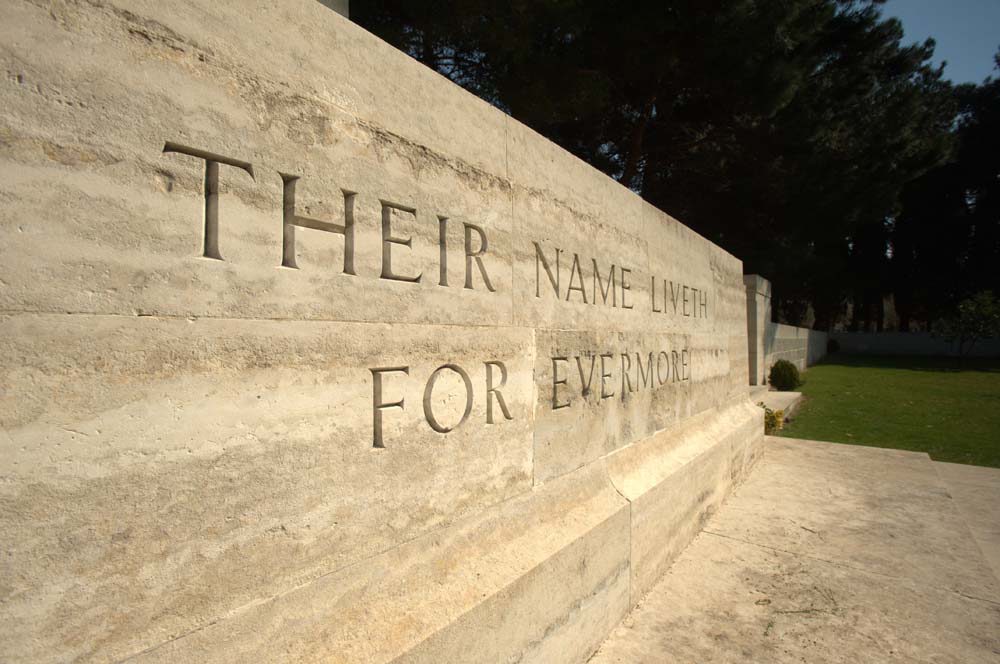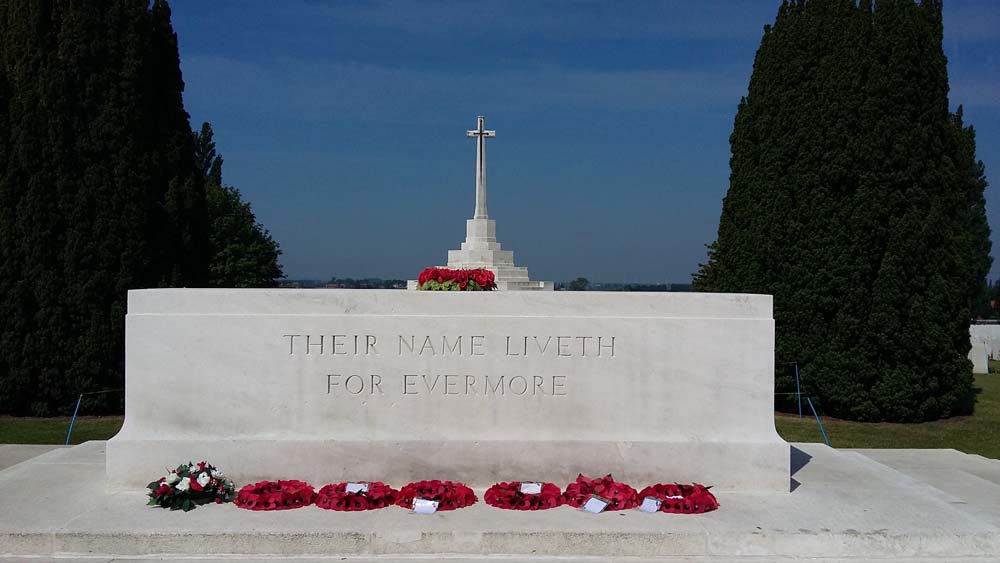23 September 2022
A Guide’s Guide to the Somme: The Stone of Remembrance
Marine Deghilage takes us through one of the CWGC’s most iconic features, the Stone of Remembrance, in the final part of our Guide’s Guide to the Somme.
I think you should know about the Stone of Remembrance

Image: Kipling's iconic text reads "Their Name Liveth for Evermore"
 Image: CWGF guide Marine Deghilage
Image: CWGF guide Marine Deghilage
Along with the Cross of Sacrifice, the Stone of Remembrance is one of the most common sites in a Commission cemetery.
The stone’s origins go back to the Commonwealth War Graves Commission’s founding in 1917.
The then Imperial War Graves Commission (IWGC) turned to architect Sir Edwin Lutyens to create a symbolic memorial to commemorate the war dead.
The result was the Stone of Remembrance.
Each stone sits within cemeteries containing 1,000 or more casualties, including both war cemeteries and memorials. On the Somme, you will find Stones of Remembrance at over 40 sites, including Thiepval, Pozieres, and Delville Wood.
The Stone of Remembrance with its common features was designed by Lutyens as a symbol of common sacrifice. Along with the Cross of Sacrifice, the stone symbolises the many Commonwealth men and women who gave their lives during the world wars.
This is the story of Sir Edwin Lutyens
 Image: Sir Edwin Lutyens
Image: Sir Edwin Lutyens
Sir Edwin Lutyens is one of the Commission’s most important architects.
Born in 1869, Lutyens was mostly known for his work designing country houses and estates before being hired by the Commission in March 1918.
Lutyens served as one of the Commission’s Principal Architects for France. He had accompanied some fellow architects on a tour of the Western Front’s battlefields in 1917 and worked the ideas of shared reverence and grief into his cemetery and memorial designs.
Lutyens supervised the design of 126 cemeteries and memorials. Some of Lutyen’s most iconic works can be found on the Somme, but none more so than the Thiepval Memorial to the Missing of the Somme.
Thiepval is the largest Commission memorial in the world. It commemorates over 72,000 names of men who died on Somme battlefields but who have no known grave.
Lutyens left a legacy in stone. An enduring mark of his design skill is the Stone of Remembrance.
Check out these features of the Stone of Remembrance
Every Stone of Remembrance displays Lutyen’s original design features:
- The stones are typically made from the same Portland stone as the majority of CWGC headstones.
- They measure 3.5m long and 1.5m in height. Each stone is the same size, regardless of the size of the cemetery in which it sits.
- The stone was designed using “entasis”, an architectural technique where the top is slightly curved. This gives the stone a feeling of solidity and gravitas.
- The curved top also helps rain drain away.
- The Stone always sits on a platform with no less than three steps.
Unlike the Cross of Sacrifice, which represents the broadly Christian faith of the Great War’s soldiers, the Stone of Remembrance is not overtly religious.
Not everyone who served in the Commonwealth’s armed forces during the world wars was Christian. You can find all the major religions represented amongst those who made the ultimate sacrifice during the World Wars.

Image: The Stone of Remembrance symbolically commemorates the Commonwealth's war dead
The words “Their name liveth for evermore” are inscribed in clear, bold lettering on the individual Stones of Remembrance.
These were chosen by world-renowned poet and writer Rudyard Kipling.
Kipling was the original literary advisor to the CWGC. Part of his job was to advise and recommend suitable wording for inscriptions on memorials as well as other literary matters of the Commission.
A biblical phrase was considered appropriate by Kipling. The text is taken from Ecclesiasticus 44:14 from the Bible’s Old Testament.
Like many millions of fathers, Kipling suffered personal tragedy during World War One with the death of his son John. Kipling pulled a lot of strings to get John, who had previously been rejected for poor eyesight, a commission in the British Army.
John died at the Battle of Loos in September 1915. His passing caused Kipling and his family immense grief.
Learn more about our Guides
The CWGF Guides Programme is our way of giving young history enthusiasts the chance to get out in the field to discover and share the stories of our war dead.
They become the eyes and ears of the Commission and Foundation on the ground at key sites in France and Belgium.
Visit our Guides page to learn more.




